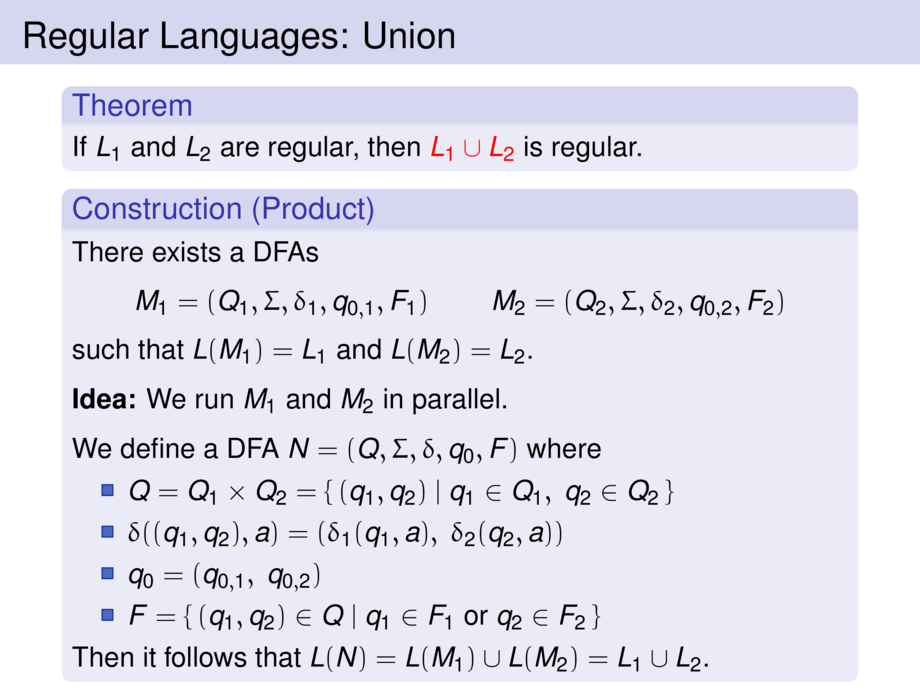



































































































63/122
\begin{frame}{Regular Languages: Union}
\begin{block}{Theorem}
If $L_1$ and $L_2$ are regular, then \alert{$L_1 \cup L_2$} is regular.
\end{block}
\pause
\begin{construction}[Product]
There exists a DFAs
\begin{talign}
M_1 = (Q_1,\Sigma,\delta_1,q_{0,1},F_1) &&
M_2 = (Q_2,\Sigma,\delta_2,q_{0,2},F_2)
\end{talign}
such that $L(M_1) = L_1$ and $L(M_2) = L_2$.
\pause\medskip
\emph{Idea:} We run $M_1$ and $M_2$ in parallel.
\pause\medskip
We define a DFA $N = (Q, \Sigma, \delta, q_0, F)$ where
\begin{itemize}\setlength{\itemsep}{0pt}
\pause
\item $Q =\pause Q_1 \times Q_2 = \{\,(q_1,q_2) \mid q_1 \in Q_1,\; q_2 \in Q_2\,\}$
\pause
\item $\delta((q_1,q_2),a) =\pause (\delta_1(q_1,a),\;\delta_2(q_2,a))$
\pause
\item $q_0 =\pause (q_{0,1},\; q_{0,2})$
\pause
\item $F =\pause \{\, (q_1,q_2) \in Q \mid q_1 \in F_1 \text{ or } q_2 \in F_2 \,\}$
\end{itemize}
\pause
Then it follows that $L(N) = L(M_1) \cup L(M_2) = L_1 \cup L_2$.
\end{construction}
\end{frame}

